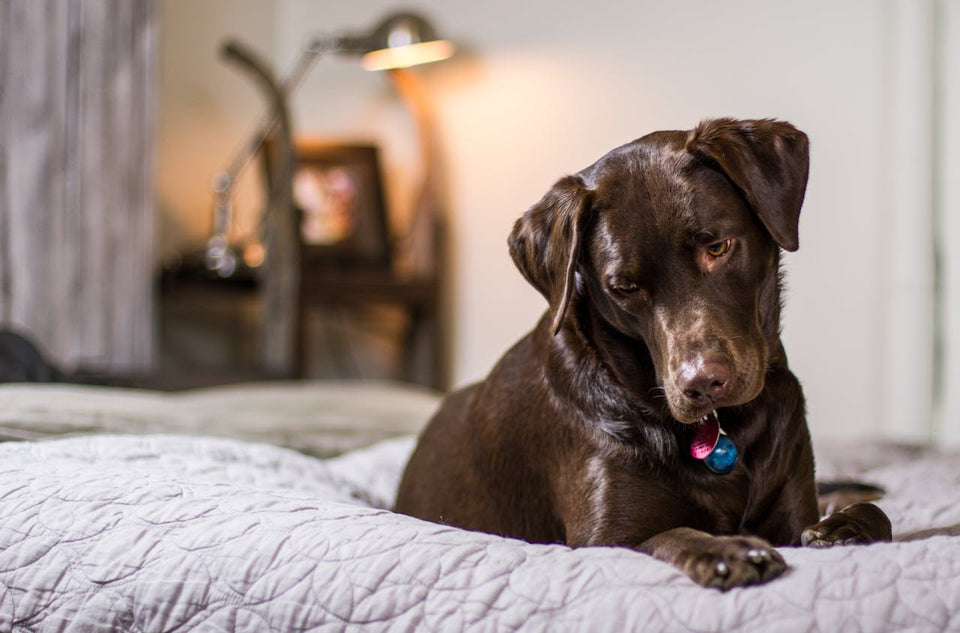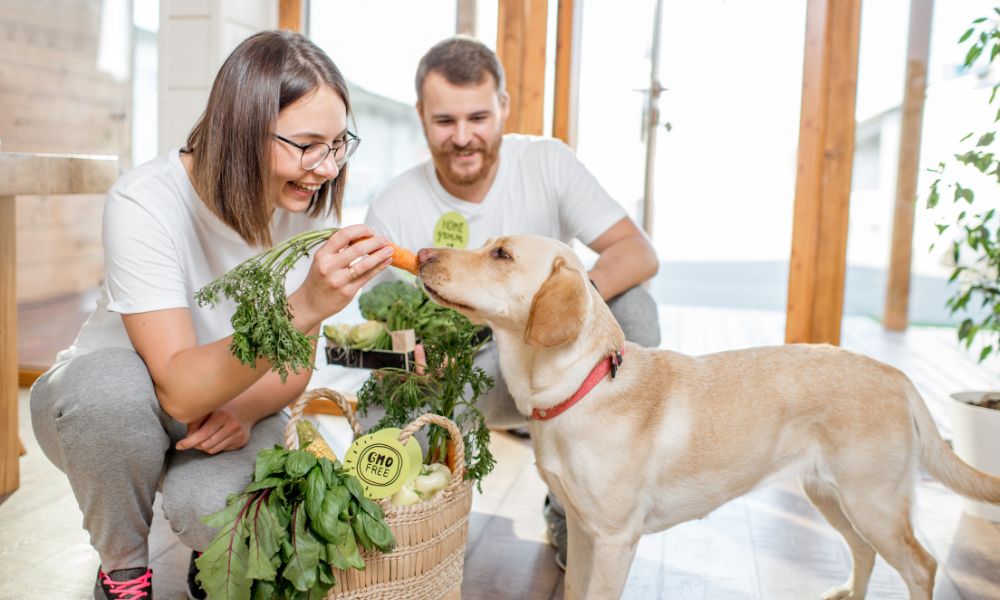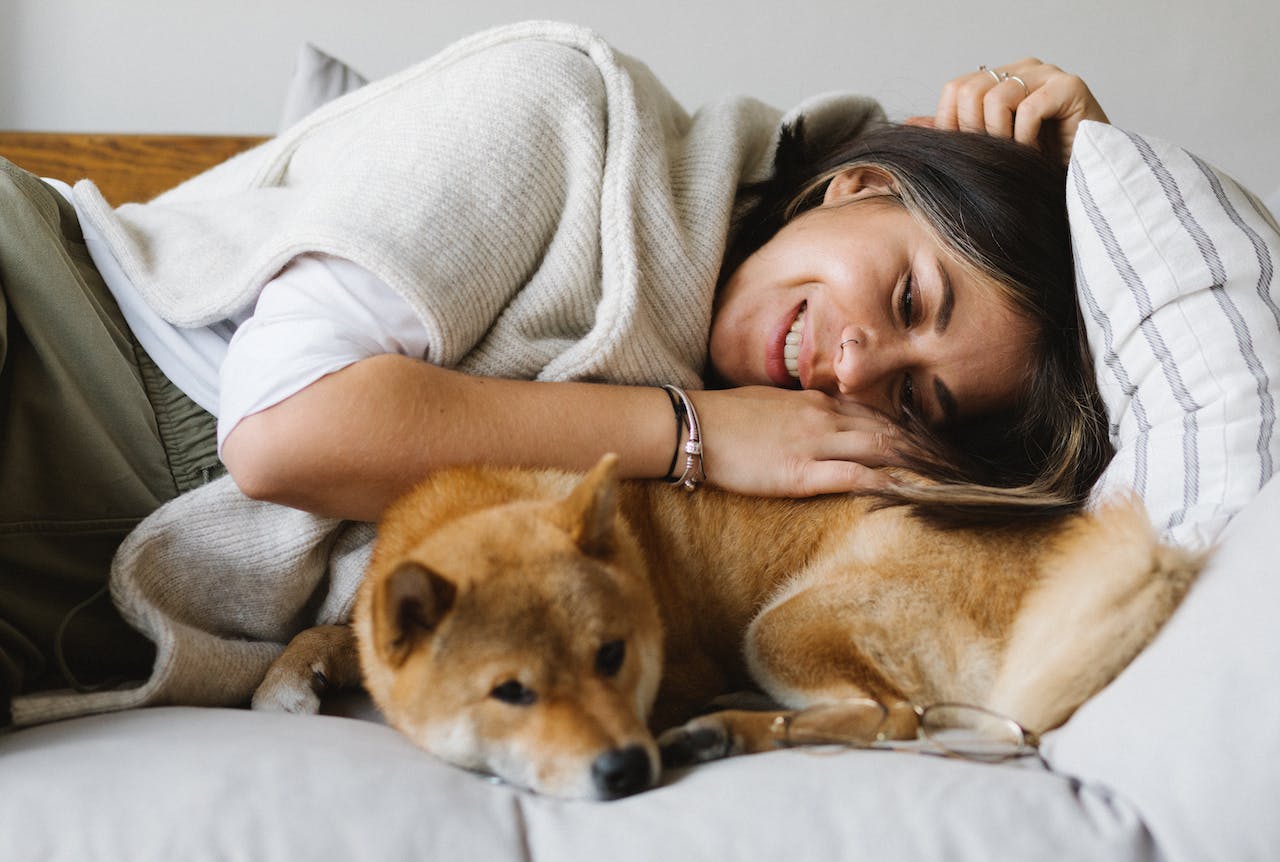
How to Stop Your Dog from Sleeping in Your Bed

Understanding your dog's sleep habits is the first step in a journey you're about to embark on. You love snuggling with your furry friend, but now you've decided it's time for them to transition to their own bed.
There’s no problem with your canine companion sleeping on the bed, but what if you want some alone time?
It often makes you wonder, why do dogs prefer the comfort of human beds, and what benefits await both of you when they switch to their own space? You're not just enhancing your sleep quality; you're also fostering independence and security in your dog.
As we delve into this transition, set your expectations realistically. It's a process, not an overnight change. And to aid this journey, we'll introduce the innovative comfort of Paw.com orthopedic dog beds, designed for your dog's ultimate sleep experience. Keep reading to learn more about this beneficial shift in your dog’s nighttime routine.
You may also like: Exploring Why Your Dog's Tail Wags During Sleep
Assessing Your Current Situation
To initiate a successful transition, you need to first understand your dog's current sleep patterns. Observe when and how your dog settles for the night. Do they seek comfort in your bed at a specific time or after a certain trigger? Recognizing these patterns is key to developing a new routine.
Identifying Attachment and Comfort Factors
Dogs often seek the warmth and closeness of their human companions. This behavior is rooted in their pack mentality. Understand what draws your dog to your bed. Is it the comfort, the warmth, or simply being close to you?
Understanding Your Dog's Sleep Needs
Just like humans, dogs have specific sleep needs that vary with age and breed. Puppies and older dogs might sleep more. Your dog's sleep requirement affects their nighttime behavior and preferences.
The Role of Your Bed in Your Dog’s Comfort
Your bed might represent security and comfort for your dog. It's a space where they feel safe and loved. Recognizing this association helps in finding a suitable alternative for your pet.
Considering Age and Health in Sleep Habits
Age and health significantly impact your dog's sleeping habits. Older dogs might need more support for their joints, while younger dogs might seek a snug, cozy spot. For example, if you like to sleep on a hard mattress, then that might not be good for your senior dog. Fortunately, orthopedic dog beds often have soft, robust support to help your old dog sleep soundly at night. If you want this support for your furry friend, then it’s best to transition him from your bed to his or hers.
Choosing the Right Dog Bed: Paw.com's Orthopedic Options
Choosing a bed that suits your dog's size and preference is crucial. It should be spacious enough for them to stretch but cozy enough to feel secure. The material should be durable yet comfortable.
Nothing wrong with having your dog sleep with you, but if you prefer to take the whole bed, then that might leave your furry friend tossing and turning to stretch their paws. This might not be ideal for senior dogs with joint pain. You want to ensure your dog has a good night sleep, so they can wake up happy and refresh in the morning to spend the day with you.
Orthopedic beds offer crucial support for your dog's joints, particularly beneficial for older dogs or breeds prone to joint issues. Paw.com's orthopedic beds are designed to provide the right balance of comfort and support.
Features of Paw.com Beds: Comfort and Durability
Paw.com beds are not just comfortable; they are also built to last. They combine luxurious, pressure-relieving comfort with materials that withstand wear and tear.
Incorporating Bed Covers and Toppers for Extra Comfort
Adding a bed cover or a topper can enhance the comfort of the bed. This can be especially helpful in easing your dog into their new sleeping arrangement.
Positioning the New Bed for Optimal Use
Placement of the bed is as important as the bed itself. Position it in a spot that your dog is naturally drawn to but is also convenient for you.
Creating a Comfortable Environment
Consistency is key. Ensure your dog's bed is always in the same spot. This consistency helps your dog associate that spot with sleep and relaxation.
Using Blankets and Covers for Familiarity
Introduce blankets or covers that your dog is already familiar with. This familiarity can ease the transition.
Ensuring the Bed Is in a Quiet, Safe Space
The bed should be in a quiet, safe corner where your dog feels secure. Avoid high-traffic areas or spots that are too isolated.
Adjusting Room Temperature and Lighting
Create an environment conducive to sleep. Adjust the room temperature and lighting to mimic the conditions your dog experienced while sleeping in your bed.
Introducing Toys and Items with Your Scent
Placing toys or items with your scent near the new bed can provide comfort and security to your dog. This can make the new sleeping area more appealing.
Training Techniques to Encourage Use of the New Bed
When transitioning your dog to a new bed, various training techniques can be employed to ensure a smooth adjustment.
Positive Reinforcement and Rewards
A highly effective method is to associate the new bed with positive experiences. This could involve rewarding your dog with treats, praise, or their favorite toys whenever they use the bed. The key is to make the new bed a place of joy and comfort.
Gradual Introduction to the New Bed
Introduce the new bed to your dog gradually. Start by placing it in a familiar area where they spend a lot of time. Encouraging your dog to explore and interact with the bed on their own terms can be helpful.
Commands and Consistency in Training
Use commands consistently to guide your dog towards using the new bed. Commands like "go to bed" can be paired with guiding gestures and rewards to reinforce the behavior.
Dealing with Resistance and Setbacks
Some dogs may resist the change or take longer to adjust. In these cases, patience is crucial. It's important to avoid using the bed as a place of punishment, as this can create negative associations.
Patience and Understanding During the Transition
Remember, each dog is unique and may require different approaches and timeframes to adjust. Patience and understanding are key to helping your dog transition smoothly.
Maintaining the New Sleep Routine
Consistency is essential in establishing a new sleep routine. Setting a specific bedtime and creating a calm environment can help signal to your dog that it's time to rest in their new bed.
Regularly Refreshing the Bed with Clean Covers and Toppers
Keep the new bed inviting by regularly cleaning and refreshing it with covers or toppers. This helps maintain a hygienic and comfortable sleeping environment.
Monitoring Your Dog’s Adaptation to the New Bed
Pay attention to how your dog is adapting to the new bed. This observation can help you tweak your approach if necessary.
Adjusting Strategies as Needed Based on Your Dog’s Response
Be open to adjusting your strategies based on your dog's response. What works for one dog might not work for another.
Ensuring Comfort and Support for Long-Term Use
Ensure that the bed provides the necessary comfort and support for your dog's long-term health and well-being. This includes considering factors like size, material, and the specific needs of your dog.
You may also like: Why Do Dogs Twitch in Their Sleep, and Should You Worry?
Embrace a Restful Night with Paw.com
As you reflect on the journey of transitioning your dog's sleep habits, remember the peaceful nights ahead. The shift from your bed to their own space isn't just a change in routine; it's a step towards better health for your dog. A dedicated bed, especially a Paw.com orthopedic bed, provides the support they need for a comfortable and restful sleep. This journey requires consistency and patience, but the rewards are worth it.
Your dog will benefit from the comfort and security of their own bed, and you'll both enjoy more restful nights. Paw.com's beds play a crucial role in this transition, offering a perfect blend of comfort and support. As you conclude this chapter, take pride in creating a healthier, more comfortable sleep environment for your loyal companion. The nights of peaceful sleep for both of you are just beginning.
Share this article
written by



